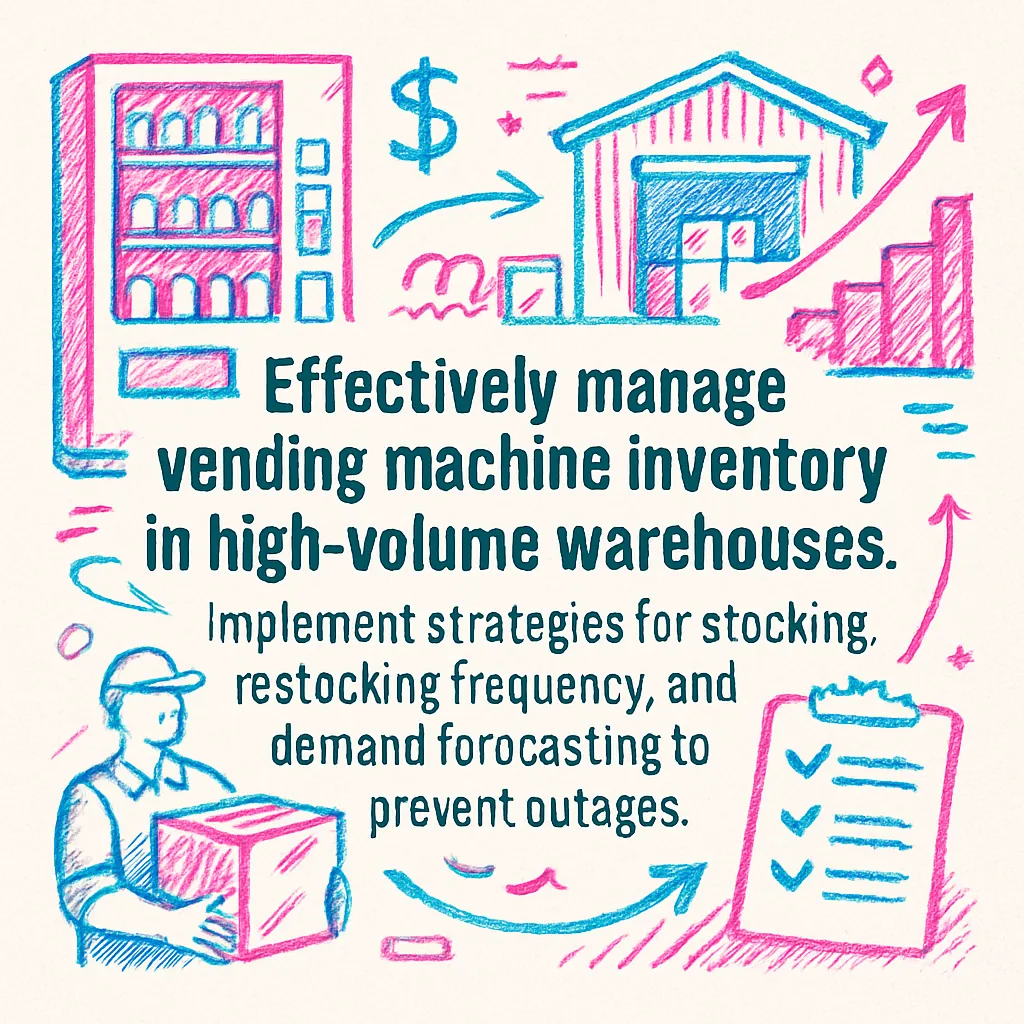Warehouses are fast-paced environments where employees often work long shifts and rely on quick, convenient access to snacks and beverages. Effective vending machine inventory management in these high-volume settings is not just about keeping machines full; it's about optimizing product availability, minimizing waste, and ensuring employee satisfaction. A poorly managed inventory can lead to frequent stockouts, disgruntled workers, and lost revenue potential.
The key to success lies in understanding demand patterns, leveraging technology, and establishing efficient restocking protocols. This ensures that popular items are always available, while less-preferred products don't clog valuable machine space. For warehouses, the challenge is amplified by varied workforces, differing shift schedules, and the sheer scale of operation.
Understanding Demand and Product Mix
High-volume warehouses typically have diverse workforces with varying preferences. Day shift workers might prefer healthier options, while night shift employees may gravitate towards energy drinks and heartier snacks. Analyzing historical sales data and even conducting informal surveys can help tailor your product mix to these specific needs. This customization is critical for customer satisfaction. Consider how factors like the duration of shifts can influence choices, as discussed in detail in guides about shift-friendly vending options.
Regularly reviewing telemetry data from modern vending machines provides valuable insights into top-selling items and slow movers. This data-driven approach allows for dynamic adjustments to the product lineup, ensuring machines are stocked with what truly sells and reducing instances of products expiring or becoming unpopular.
Leveraging Technology for Efficiency
Modern vending machines are equipped with advanced telemetry systems that report real-time inventory levels and sales data. This technology is invaluable for managing inventory in high-volume settings. Operators can monitor performance remotely, identify machines requiring attention, and predict restocking needs well in advance, streamlining the entire process. This predictive capability helps optimize delivery routes and ensures that service calls are made when truly necessary, avoiding unnecessary trips.
For large logistics centers, this level of precision can significantly impact operational efficiency. For further reading on specialized solutions, review resources on managing vending in large logistics hubs.
Optimizing Restocking Frequency and Protocols
Given the high traffic in warehouses, vending machines may require more frequent restocking than in other locations. Establishing a consistent restocking schedule—whether daily or every other day, based on sales data—is essential. Efficient restocking involves not just filling machines but also rotating stock to ensure freshness, cleaning the machines, and addressing any minor maintenance issues on the spot. Clear communication between warehouse management and vending operators is also crucial for seamless access and minimal disruption to warehouse operations.
Implementing clear protocols for service requests and emergency restocking also helps maintain constant availability during peak periods. For more advanced considerations, consider exploring resources on vending machines vs. micro markets in warehouses, as micro markets introduce another layer of inventory demands.
By focusing on these pillars of inventory management—demand understanding, technological integration, and optimized restocking—warehouses can ensure their vending solutions are a consistent and reliable amenity for their hard-working employees, contributing positively to morale and productivity.

